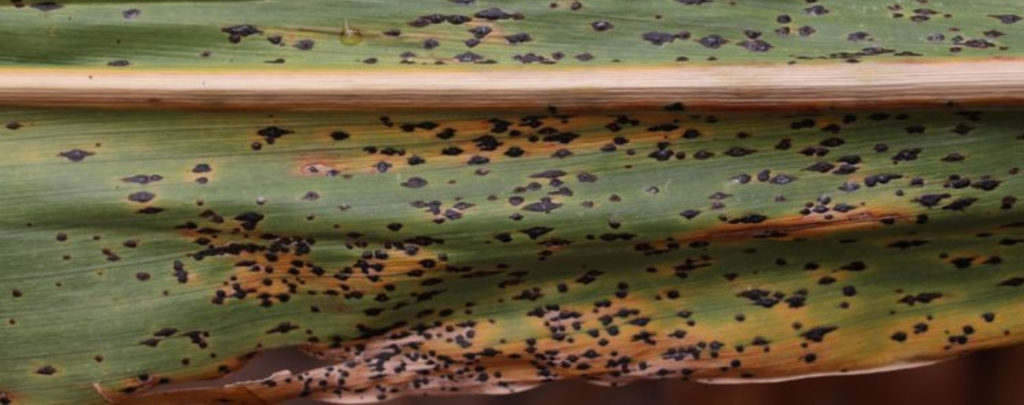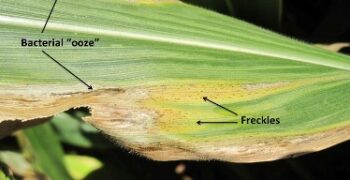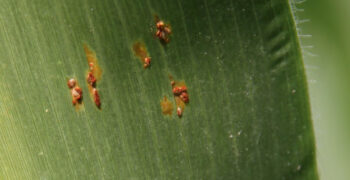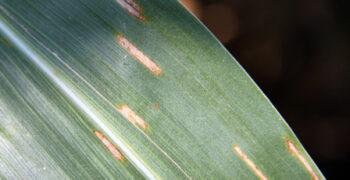Background:
While being a new disease to the midwest, other parts of the world have been dealing with Tar Spot for some years now. Mexico, Latin and Central America, South America and the Caribbean are the areas where Tar Spot is a common foliar disease. It was identified in 2015 here in the United States. Tar Spot is caused by the fungus Phyllachora maydis which produces small roughly (0.2-0.8 inch) semi circle, raised black lesions called Stromata. Stromata can be seen on upper and lower leaves of a corn plant and in some cases on the leaf sheaths and husks of corn plant. When conditions are right, severity of Tar Spot can reach above 50% in susceptible hybrids at growth stage R5.
Life Cycle:
Tar Spot will overwinter in infected corn residue. Cool temperatures (60-70 degrees Fahrenheit) and humidity above 75 % favor development of tar spot. Tar spot can infect as early as V3 growth stage. After rain or periods of high humidity the stromata will extrude spores, rain and wind will disperse these spores up to 80 yards and infect healthy corn plants. Once infected the new stromata will form on infected tissue in roughly 2 weeks. When conditions are favorable there can be multiple cycles of spores being spread throughout the growing season.
Scouting:
When looking for Tar Spot be sure to be looking for black, tar like spots on the corn leaves. The best time to scout is R3-R6, although scouting should be conducted regularly to catch the disease at the start of its life cycle. Tar Spot will also produce a brown spot that resembles a “fisheye” appearance around the black structures. Outbreaks can reduce yield by more than 30 bushels per acre. Reduced ear weight, poor kernel fill, loose kernel, seed germinating while still on the ear, stalk rot and lodging can all be caused by Tar Spot. Forage quality can also be reduced by Tar Spot.
Management:
- Managing residue is a key part limiting tar spot for the next growing season, tilling will bury the residue and help breakdown infected tissue faster resulting in less spores overwintering within the soil.
- Rotating to non host crops will give residue time to breakdown, reducing spore populations.
- Plant non susceptible hybrids
- Spraying fungicides may reduce tar spot although data is very limited with how well they control the disease. Make sure to use fungicides with multiple modes of actions.



